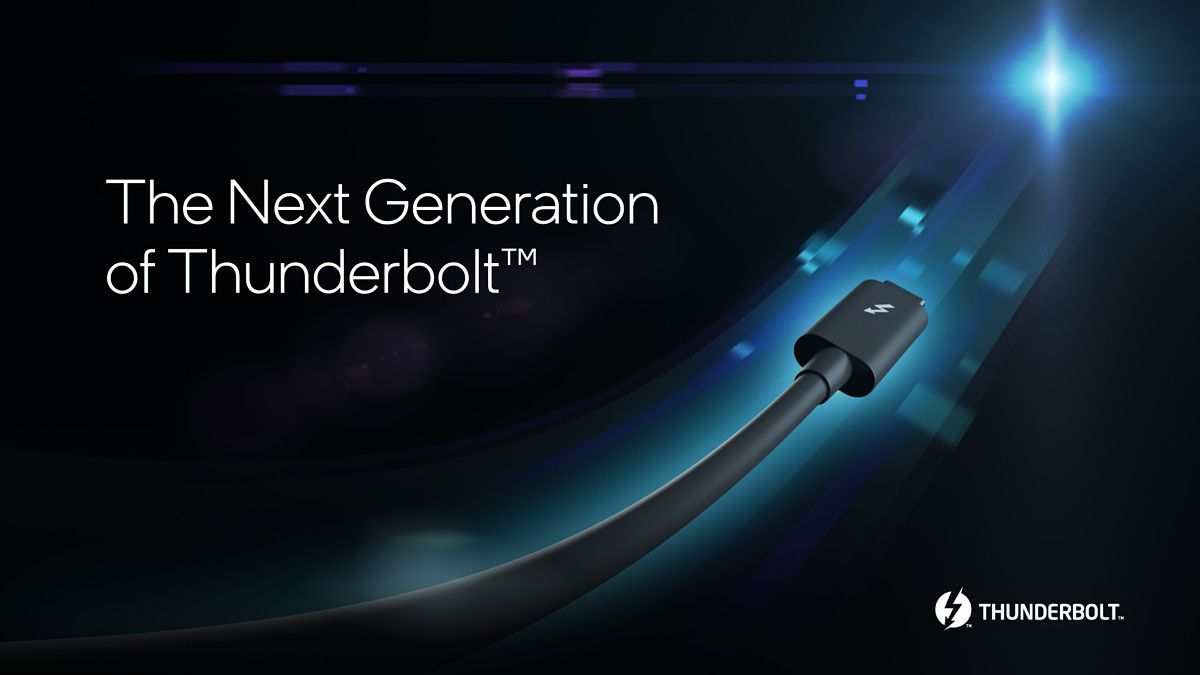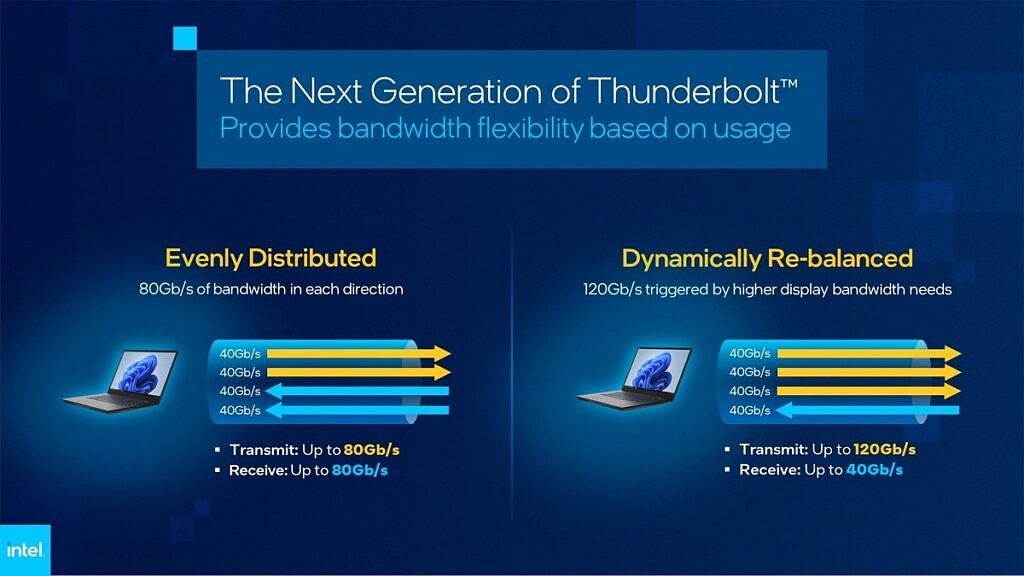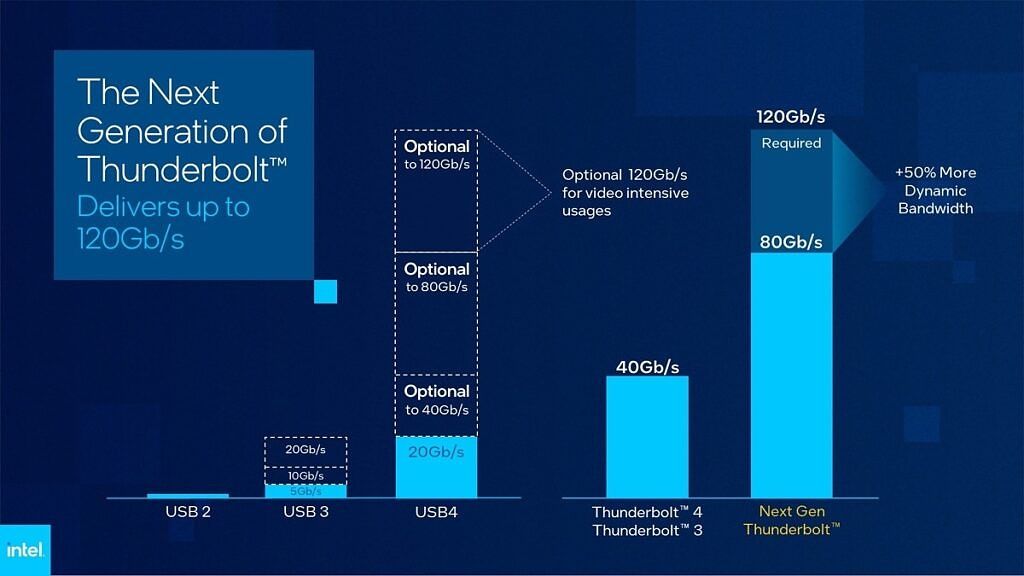Intel today shared a teaser for the next generation of Thunderbolt, which is built on the USB4 version 2.0 specification. While the company doesn't have a lot to say right now, we did learn that next-gen Thunderbolt will offer 80Gbps of bi-directional bandwidth, or up to 120Gbps for special configurations.
Data on the Thunderbolt link is sent across four lanes, each supporting 40Gbps, which results in 80Gbps for standard configurations. However, in specific use cases like extremely high-resolution displays, the configuration can automatically adapt to provide 120Gbps in one direction, with only 40Gbps in the opposite direction. That should allow for even higher-resolution displays to connect via Thunderbolt.
The next generation of Thunderbolt will also integrate the latest DisplayPort 2.1 specification announced earlier this week, as well as two times faster PCI Express data, presumably thanks to the adoption of PCIe 4.0. These capabilities will work with existing passive cables up to 1 meter thanks to a new signaling technology, too. And, of course, the next generation of Thunderbolt will be backwards compatible with previous generations of Thunderbolt, USB, and DisplayPort.
Of course, this may all sound familiar if you heard the announcement of USB4 version 2.0, which touts many of the same capabilities. The big difference here is that the USB4 specification only says what's possible, but the truth is companies can get USB4 certification for ports with just 20Gbps of bandwidth. While there are branding guidelines to indicate what capabilities each device offers on its USB ports, the fact remains that two USB4 ports can have radically different capabilities.
To get a device certified for Thunderbolt, those ports need to support 80Gbps bi-directional bandwidth, as well as the 120Gbps mode for high-resolution displays. It's all required, so that when you see a device with the Thunderbolt logo, you know exactly what you're getting. And, of course, these products are backed by Intel's certification process, so the experience should be reliable and consistent on any certified device.
At this time, Intel hasn't shared much on the availability of the next generation of Thunderbolt, though it seems very likely we'd see it debut alongside 13th-generation laptop processors. We should hear about those in early 2023, assuming the schedule lines up with the 12th-generation launch this year. We also don't know the official branding for this next-gen Thunderbolt, but most would assume it will be called Thunderbolt 5.



